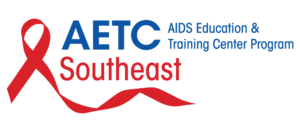Oral Health Medical Dental Considerations for Patients with HIV on Antiretroviral Therapy
Table of Contents
- Introduction
- Important Facts
- Important Medical Considerations
- Important Dental Considerations
- Treatment Recommendations for Common Oral Manifestations for Patient on ART
- Xerostomia and Dental Caries
- Periodontal Disease
- Oral HPV
- Changes in Oral Manifestations in the Era of ART
- Significance of Oral Lesions
- Important Lab Values
- CD4 Count: T- 4 Lymphocytes
- HIV RNA: Viral Load
- Neutrophil Count
- Platelet Count
- Points to Remember for Patients Living with HIV in the Era of ART
- Useful Resources
- Evaluation of Drug Interactions
- Comprehensive HIV Information
- Mountain Plains AETC Oral Health
- Comprehensive HIV Oral Health Information
Editors
Mark Schweizer, DDS MPH
Dental Director, Southeast AIDS Education Training Center
